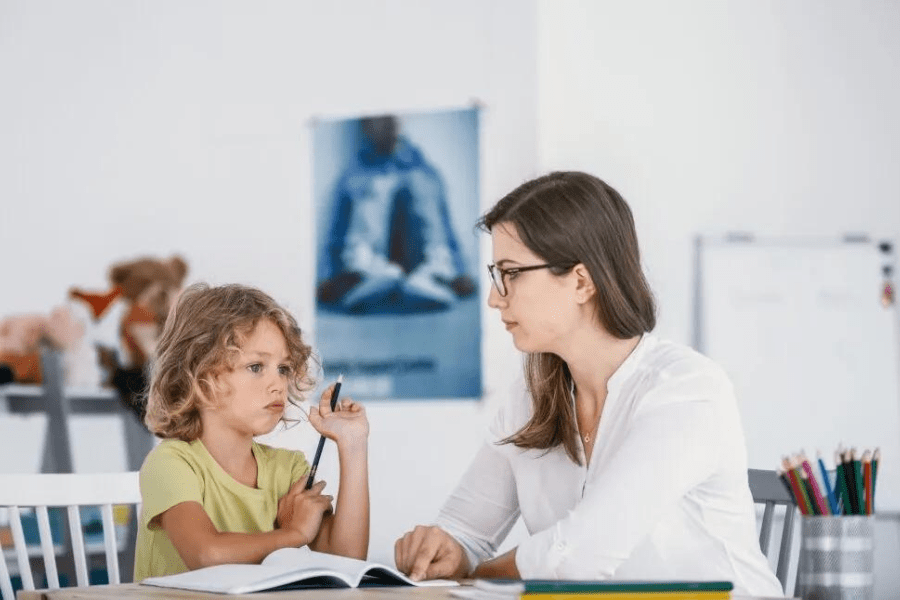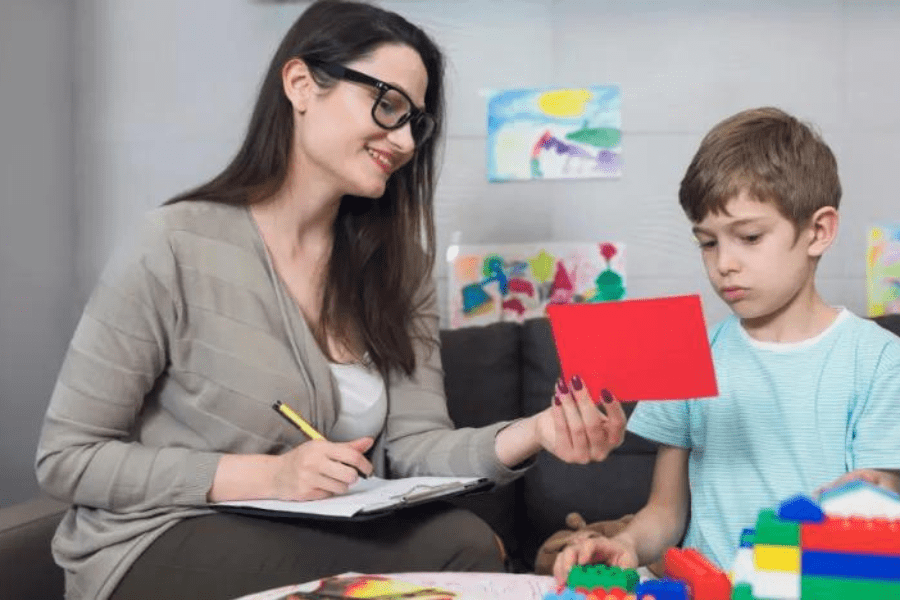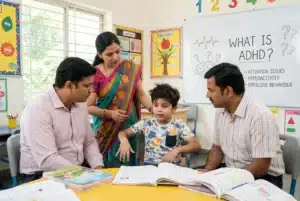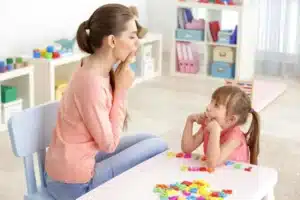
Source: innovationdistrict
Dysgraphia is a common learning condition in which due to a certain neural malfunctioning the child’s ability to write is hampered. Dysgraphia is a disorder of written expression where due to poor neural functioning the mind and the hand are on two different wavelengths making it difficult for the child to organise and place their thoughts on paper.
Dysgraphia Therapy has been of substantial help in lessening the struggles faced by the child during writing and includes treatments like occupational and physical therapy and tools like pencil grips and special paper to improve writing skills.
In this blog, we will explore the types of Dysgraphia Therapy available, and how it helps individuals to improve their writing skills.
What are Different Tools and Treatment to Help Dysgraphia Students?
Dysgraphia students often face unique challenges in expressing their thoughts through writing due to difficulties in motor skills and handwriting. These struggles can hinder their academic progress, but with the right tools and strategies, they can significantly improve. Various methods, such as Dysgraphia Therapy, provide targeted support to help these students overcome writing difficulties.
Below are some effective tools and treatment options that benefit dysgraphia students:
Pencil Grip Enhancers
Knowing how to hold and use a pencil can improve the legibility of your handwriting. Due to the poor fine motor skills of the child using a pencil grip holder can allow the child to be flexible yet stable which helps them to gain proper control while writing.
Occupational Therapy
Occupational Therapy is the most recommended and effective method to promote the child’s motor skills using the ideal interventions in the form of various tools and engaging activities
This therapy can include:
- Typing exercises
- Multi-sensory approaches like air writing
- Letter formation exercises
- Use of lined or graph paper for better visual guidance
Slant Boards
These hard boards help in the proper positioning of the hand which helps them to sit properly with the hand at an angle that promotes smooth flow of writing. These boards are excellent in not just handwriting improving but also correcting their overall posture.
Technological Aids
Interactive technology aids such as text-to-speech apps are of great help which helps in converting text to speech breaking complicated words and making reading and writing highly accessible. For Dysgraphia Therapy, combining these tools and professional support like occupational therapy can greatly enhance the learning experience for dysgraphia students, allowing them to express their ideas more effectively.

Source: theparent
Tips on Helping Your Child with Dysgraphia
Managing dysgraphia can be a challenging task but with the support of guided academic support through strategies, teaching tactics, and occupational therapy methods the overall motor skills of the child can be enhanced.
Using an ideal mix of multimodal sensory activities, and engaging interactive activities children can overcome the struggles caused by dysgraphia and help them to write effortlessly. As writing forms an indispensable part of our educational system helping the child write confidently is highly essential which is possible by providing the child the desired support that can uplift his writing skills in turn helping him be at par with his counterparts in a regular mainstream classroom.
Below are some practical tips that you can implement at home:
Feel the Letters
Encourage your child to focus on how a letter feels rather than how it looks. Trace letters on their back or palm, and ask them to reproduce the letters to reinforce memory.
Write Big
Use large motor movements to help your child remember letter formation. Activities like writing big letters with shaving cream or sand can engage multiple senses.
Dig into Clay
Clay provides excellent sensory feedback. Your child can roll it into ropes and form letters, which helps in building both hand strength and letter recognition.
Pinching Skills
Improve your child’s pencil grip by using tools like tweezers or chopsticks. You can make it fun by playing games that involve pinching small objects.
Cross-Body Training
Writing requires coordination between both sides of the body. Try activities like cutting with scissors or doing exercises like windmills to build this coordination.
Strength and Stability
Core and shoulder strength are essential for good posture and writing. Incorporate activities like wheelbarrow walking or hanging from monkey bars into your child’s routine.
Practice Storytelling
Help your child organize their thoughts by practicing storytelling with a clear structure, such as breaking down the day into parts.
Speak It First
Encourage your child to use voice recording tools on smartphones or tablets. They can speak their ideas aloud, and then listen to them while writing.
By joining these approaches with Dysgraphia Therapy, you can help your kid to improve their writing skills while building confidence.

Source: childrens
Learning Disabilities Course
The rising awareness of Inclusive Education has led to a spike in the demand for skilled special educators who have acquired an authentic certification in a Learning Disability Course. A Learning Disabilities Course credential will exemplify your resume making you noticeable at some of the topmost prestigious preschools across the country. The Learning Disability Course certification provides trainees with a deep understanding of the learning needs and struggles of the children. With the help of different strategies and techniques training can make a huge difference to the academic as well as overall progress of the child.
These programs offer a valuable vision for identifying various learning disabilities, developing effective intervention strategies, and creating inclusive educational environments. One such course is offered by Vidhyanidhi Education Society (Govt. Regd.) , which is designed to prepare individuals with practical skills and information to work with students who have learning difficulties.
Key areas covered in a Learning Disabilities Course include:
Diagnosis of learning disabilities: This course trains aspiring teachers to identify the signs of different disabilities helping them to make the perfect diagnosis of the learning disability the child is suffering from.
Intervention techniques
Developing personalized learning plans and using tools such as Dysgraphia Therapy to help children in overcoming writing challenges.
Inclusive education strategies
Making a classroom atmosphere that provides diverse learning needs.
Building a strong Parent-child and community bond: This course helps the trainees to understand the significance of parents’ contribution to the overall well-being of the child. Also, this course sheds light on how the community can help boost the child’s confidence through their positive attitude and encouragement.
The Learning Disabilities Course offered by Vidhyanidhi Education Society (Govt. Regd.) not only covers this topic but also provides real-world experience and practical methods, making it an inclusive choice for those looking to make a positive impact in the field of special education.
Boost your skills in Dysgraphia Therapy! Join Vidhyanidhi Education Society’s Diploma in LD Course today!
For more details on the Diploma in LD Course Call/Whatsapp at +919321024137 / +919869866277
To download the brochure of the Diploma in LD Course, Click Here!
FAQs
What is an LD Course?
An LD Course is a professional credential that trains aspirants to recognize the learning disabilities that a child faces based on the symptoms and devise remedial interventions.
Who is Eligible for a Learning Disability Course?
Anyone who has obtained their 10 + 2 certification is entitled to enroll in a Learning Disability Course.
Where to do Online Learning Disability Course?
You can pursue an Online Learning Disability Course from a trusted platform Vidhyanidhi Education Society, offering comprehensive training for educators.



